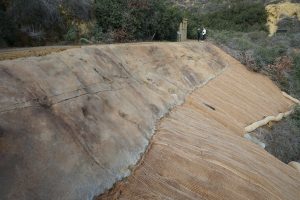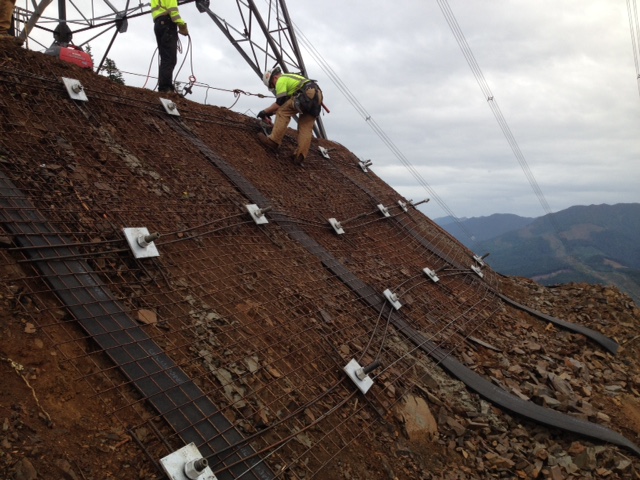Emergency preparedness for power infrastructure involves more than just keeping the lights on. It is about ensuring that the heartbeat of a community continues to thrive, even in the face of unforeseen disruptions. This preparedness encompasses strategic planning, robust systems, and proactive measures to safeguard the continuous operation of essential services.

Today, it's more crucial than ever to enhance a community's resilience by developing comprehensive emergency response strategies that include maintaining critical equipment and training personnel on effective contingency protocols.
Effective plans involve analyzing potential threats, assessing vulnerabilities, prioritizing assets, and investing in cutting-edge technology to ensure the continuous operation of essential services. Collaboration and communication between stakeholders are key to achieving these goals.
Prepared communities can face emergencies with confidence, minimizing disruptions and protecting their wellbeing.
Vegetation management is a crucial component of maintaining and protecting power infrastructure, particularly in regions susceptible to geohazards like landslides, rockfalls, or flooding. Effective vegetation management helps to reduce the risk of power line damage by controlling the growth of trees and other vegetation that could potentially interfere with the infrastructure or contribute to geohazard events. By strategically clearing or maintaining vegetation, especially along slopes and in areas prone to erosion, the stability of the ground can be enhanced, reducing the likelihood of debris flows or landslides that could jeopardize power lines. This approach not only safeguards the integrity of the power grid but also supports broader efforts in geohazard mitigation by minimizing the impact of natural disasters on critical infrastructure. Additionally, environmentally conscious techniques, such as using spider excavators for precise, low-impact clearing, ensure that the surrounding ecosystem remains as undisturbed as possible, promoting rapid vegetation recovery and long-term environmental sustainability.






Effective techniques for slope handling, such as "contour grading," minimize soil erosion. This method is an example of a tailored approach maximizing both productivity and ecological balance.
Implementing slope management techniques can enhance operational efficiency by up to 30%.
Investments in these strategies ensure that any operation benefits from reduced downtime and enhanced machinery usage; it leads to a more sustainable future, highlighting long-term operational enhancements. This approach fosters robust growth and demonstrates a commitment to excellence in operational management.



Setting casings for secure foundations is pivotal to ensuring the structural integrity of power infrastructure, and it lays the groundwork for enduring, resilient systems.
Properly installed casings provide unmatched protection against natural forces.
When executed with precision, they fortify the core components, culminating in a framework that withstands diverse environmental challenges, providing the essential robustness needed for emergency preparedness.
Such meticulous attention to detail ensures that even in the face of natural calamities, the infrastructure remains steadfast. This commitment to excellence in foundational security not only upholds the highest safety standards but also reinforces the overall resilience of the power systems, instilling confidence and optimism in their ability to endure and thrive amidst challenges.

Utility Surveys: Conduct thorough surveys to assess soil conditions and potential obstacles.
Material Selection: Choose durable materials that can withstand harsh weather conditions.
Safety Protocols: Implement stringent safety measures during installation.
Maintenance Plans: Develop and adhere to regular maintenance schedules.
Load Testing: Perform rigorous testing to ensure poles can handle anticipated loads.
Emergency Procedures: Establish clear protocols for immediate response to pole failures.
Debris Flow Barriers: Install debris flow barriers in areas prone to landslides or heavy runoff to protect power poles from being damaged or destabilized by shifting debris.
Routine Testing and Inspection: Regularly inspect and test poles to identify weaknesses and ensure continuous functionality.
Ensuring continuous functionality exemplifies commitment to emergency preparedness and operational excellence.
Recognizing environmental consciousness is imperative, especially in emergency preparedness, where every decision counts. Organizations that incorporate eco-friendly practices in their infrastructure planning not only contribute to sustainability but also enhance resilience and adaptability during crises.
By prioritizing green initiatives such as "smart grids" and renewable energy sources, they add a layer of integrity to their operations. This not only builds confidence in their preparedness but also sets a benchmark for excellence. The intersection of environmental consciousness and emergency preparedness ensures a robust and forward-thinking approach to power infrastructure.

Their unique design allows them to maneuver efficiently, even in areas that are typically inaccessible.
Operators can use spider excavators to support power line maintenance, ensuring rapid restoration of services after natural disasters. These machines' versatility, stability, and adaptability make them crucial components in maintaining critical infrastructure.
Our low environmental disruption techniques, including the use of spider excavators, have proven so effective that vegetation regrowth has been observed in as little as four months, with no trace of the equipment's path within a year—a result praised by utility environmental consultants as a game changer.
Acknowledging that each power infrastructure project has distinct challenges, organizations must develop tailored strategies that address specific needs. Customized solutions offer enhanced efficiency, reduced risks, and higher overall project success rates.
These bespoke approaches can significantly improve emergency preparedness, driving resilience and fostering innovation in power infrastructure projects.
In the realm of emergency preparedness for power infrastructure, unique challenges necessitate tailored strategies for optimal outcomes.
This approach ensures a robust framework that adapts to various challenges while maintaining operational stability.
Ultimately, organizations enhance their resilience and preparedness by adopting techniques customized to their specific challenges.
Leveraging innovative efficiency strategies, they can streamline emergency preparedness, ensuring rapid response and minimal disruption to reduce outage duration. Integrating cutting-edge technologies and sustainable practices, organizations significantly bolster their infrastructure's resilience, ensuring reliability under diverse scenarios.
By implementing real-time monitoring systems and predictive analytics, they transform emergency preparedness. These advancements not only enhance response mechanisms but also reduce downtime, reflecting a commitment to uninterrupted service. The integration of renewable energy sources further exemplifies forward-thinking approaches, ensuring long-term sustainability and resilience in power infrastructure projects.
Embracing spider excavators for emergency preparedness heralds a significant innovation in the realm of power infrastructure maintenance and resilience. These machines provide unmatched adaptability, particularly in challenging terrains, ensuring uninterrupted service delivery.
Spider excavators' unique design allows them to navigate up to 45-degree slopes with remarkable ease.
Hence, their utility in emergency preparedness cannot be overstated, as they respond effectively during infrastructure crises.
Moreover, these machines exhibit excellent stability and maneuverability, making them indispensable assets in critical scenarios.
Their ability to delicately tread over diverse environments reduces damage to sensitive areas, showcasing their versatility.
Ultimately, the integration of spider excavators into emergency preparedness plans enhances safety. Power infrastructure projects stand to benefit immensely from these machines, ensuring resilience and robust service reliability even in the face of adversity.

Their adaptability allows project managers to tailor applications to specific environmental conditions, effectively optimizing performance and sustainability.
Utilizing various casing materials brings numerous advantages to power infrastructure projects.
Selecting the right material enhances system reliability and adaptability.
Composites and alloys ensure longevity, reducing maintenance costs.
Eco-friendly materials contribute to environmental conservation and sustainable practices.
Proper backfilling is crucial for ensuring stability in power infrastructure projects. It involves using the right materials and techniques to support structures, prevent erosion, and maintain long-term integrity.
This practice minimizes ground movement and water infiltration, preserving the infrastructure's resilience and reliability.

Different soil types exhibit varying levels of load-bearing capacity, which directly impacts structural foundations.
Clay, sand, silt, and gravel each present unique challenges and benefits, demanding careful assessment during project planning.
Proper evaluation helps in mitigating risks related to shifting, settling, or erosion, essential for resilient infrastructure.
Compacting soil efficiently enhances its load-bearing properties, reduces permeability, and minimizes settlement issues, supporting robust foundational stability.
Therefore, attention to soil type and compactness is paramount. Proactive consideration of these factors ensures infrastructures withstand adverse conditions, fortifying resilience against potential emergencies.
Utilizing a helicopter in geohazard mitigation for emergency projects offers a rapid and highly effective response to critical situations where traditional access methods are either impossible or too slow. In scenarios such as landslides, rockfall events, or slope failures, the swift deployment of mitigation teams and materials is crucial to prevent further damage and ensure public safety. Helicopters provide the ability to transport specialized equipment, personnel, and materials directly to remote or inaccessible sites, bypassing the challenges posed by rough terrain, steep slopes, or road blockages. This aerial approach enables quick assessment and immediate action, significantly reducing response time and minimizing the impact of the geohazard.
In emergency situations, time is of the essence, and the use of helicopters can mean the difference between containment and catastrophe. For instance, in rockfall mitigation, helicopters can be used to position rockfall mesh, install tieback anchors, or deliver heavy equipment like drilling rigs to locations that would otherwise require days of ground-based mobilization. This capability not only accelerates the mitigation process but also enhances safety by allowing workers to avoid hazardous terrain.



Efficiency and minimal disruption are cornerstones of successful emergency preparedness within power infrastructure projects.
By employing predictive maintenance technologies (PMTs) and leveraging big data, they ensure systems function optimally, reducing the likelihood of unexpected failures and minimizing potential disturbances. Embracing innovation leads to achieving swift, seamless operations even in crisis situations.
Clear "action plans" and "reaction plans" are indispensable for minimizing impact during emergencies.
When navigating sensitive areas, attention to detail and deliberate planning become crucial competencies.
Implementing these strategies fosters harmony between development and conservation.
Professionals must prioritize environmental and cultural preservation.
By navigating with care, they not only achieve project goals but also contribute to sustainable and respectful development.
Effective cost management in helicopter mobilization can significantly enhance operational efficiency.
These strategies ensure financial resources are maximized without compromising mission-critical operations.
As a result, organizations can achieve sustainability and operational excellence.
Commitment to these practices fosters a resilient and adaptive operational framework.